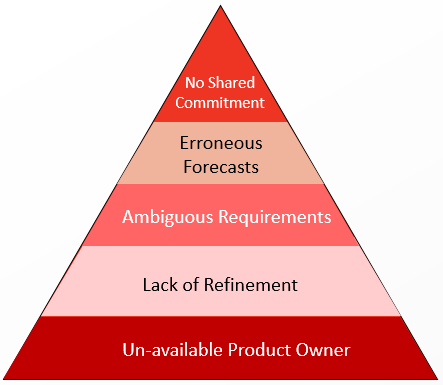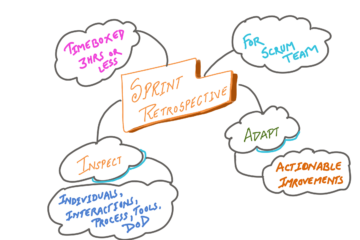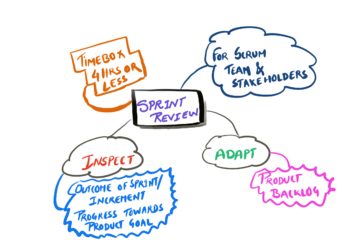Daily Scrum is an important Inspect and Adapt event for a Scrum team. Yet the purpose is often ignored and swept under the carpet by a multitude of teams. In my 9 years of experience with Scrum I have seen teams using Daily Scrum for all the wrong reasons; although very often than not few patterns keep coming back.
In this blog post, I am going to share the 5 Dysfunctions of a Daily Scrum that I have seen across multiple teams.

Dysfunction 1: Daily Scrum as the status update meeting.
I would not blame the teams for it. Somewhere the Scrum guide, Scrum Masters and the � Agile Coaches� are equally responsible for it. Scrum Guide provided an easy to use template for the Daily Scrum –
- What did I do yesterday that helped the Development Team meet the Sprint Goal?
- What will I do today that would help the Development Team to meet the Sprint Goal?
- Do I see any impediments that prevents me or the Development Team to meet the Sprint Goal?
Development Teams often get stuck with this template and turn their Daily Scrums into a status update meeting. All they do is to answer these questions monotonously and get back to their seats. No focus on progress towards the Sprint goal, whatsoever.
Dysfunction 2: Scrum Master leading the Daily Scrum.
Scrum guide clearly mentions that Daily Scrum is an event internal to the Development Team. The Development Team is responsible for deciding the structure as well as conducting the Daily Scrum. The only job of Scrum Master with respect to Daily Scrum is to teach the Development Team keep it within the time-box of 15 minutes.
A lot of Scrum Masters on the other hand seem to think otherwise. They lead the Daily Scrum by asking each Development Team member the three questions. They do not stop there but go ahead and ask explanation if anything that was discussed is not yet completed. Focus is moved away from “the progress towards sprint goal� to answering the three questions with details.
Dysfunction 3: The meeting that never ends.
As per the Scrum Guide the Daily Scrum is a time-boxed event of 15 minutes which is used to improve communications, identify impediments to be removed, highlight and promote quick decision making by the team. The Development Team Members often meet after the Daily Scrum for detailed discussions and re-plan their work.
In my experience I have come across many teams who do not pay attention to aforementioned detail and then the event is used to solve problems; find solutions to their queries. As a result it goes on and on for hours without adding much value to the Development Team.
Dysfunction 4: Not all Development Team members participate.
Another dysfunction that I have come across is Development Team members do not participate. One or the other development team member is absent. And this is not one-off chance, but happens on a regular basis. Sometimes they are late, sometimes they just don’t show up and sometimes they are busy with something else that they can’t join the Daily Scrum. Also, at times the Development Team members are just silent spectators who speak when spoken to. They come to the event only for the sake of attendance and if no one speaks to them, they move back to their desks as silently as they were attending the event.
Dysfunction 5: Changing the schedule of Daily Scrum often.
This is a common dysfunction when the Scrum Master acts as a lead/takes lead in the events. The Scrum Master keeps changing the schedule of the as per his/her availability (read whims and fancies). I have also seen Daily Scrums being rescheduled because there is some other “important� meeting that needs to be attended. Few teams simply reschedule for the lack of availability of the conference rooms.
Teams often forget that the Daily Scrum has to happen at the same time, same place to reduce complexity and have consistency. This also helps them plan their work in a better way.
Conclusion: Daily Scrum is a key Inspect and Adapt event for the Development team to plan their day work. It is internal to the Development team but a Scrum Master needs to be vigilant to find the anti-patterns and help the development team overcome them.
Want to bust many more dysfunctions and know how to improve, attend one of our Professional Scrum Courses. The schedule is available at https://www.agilemania.com/professional-scrum-master-psm-training/


